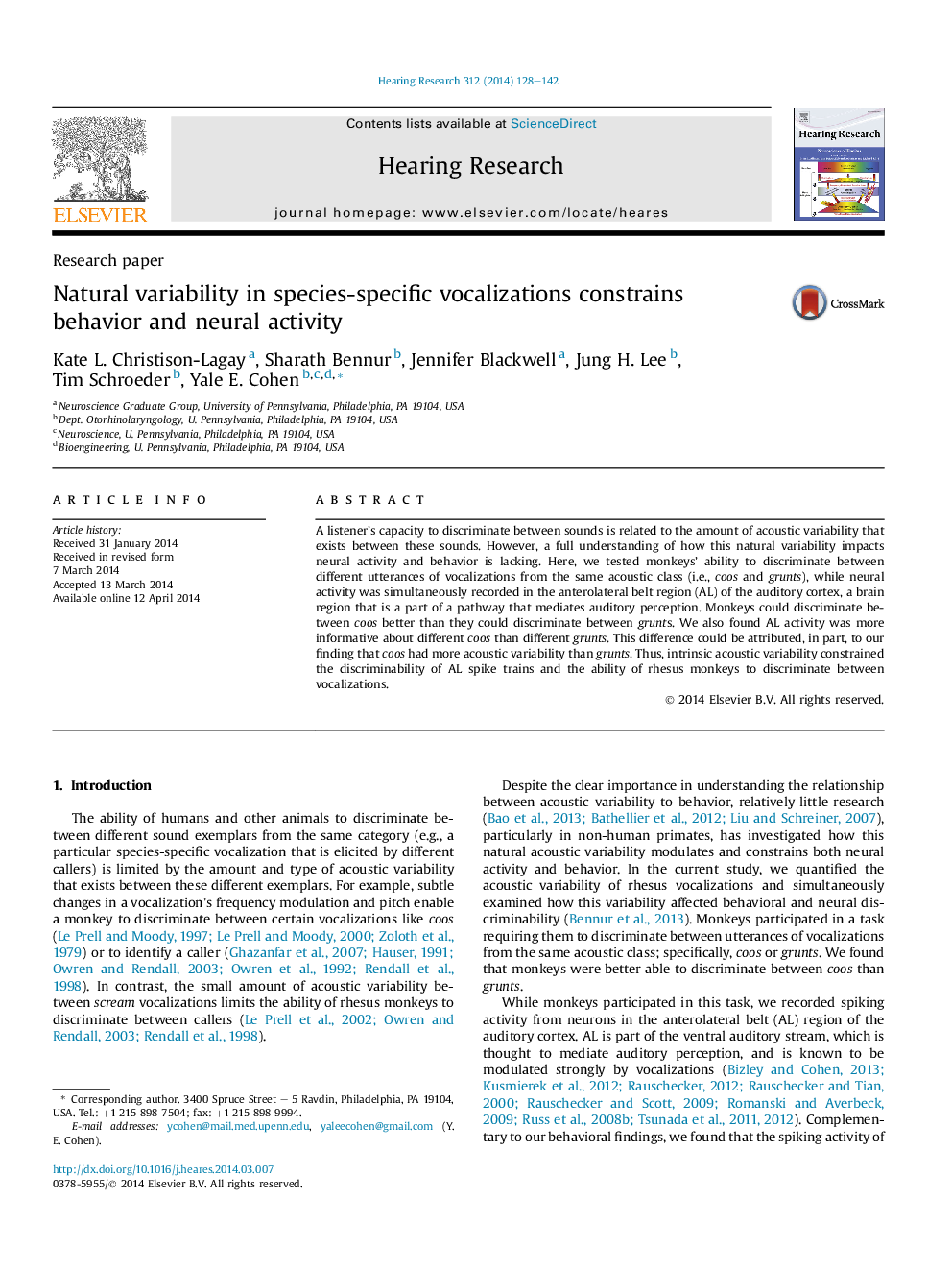| Article ID | Journal | Published Year | Pages | File Type |
|---|---|---|---|---|
| 6287407 | Hearing Research | 2014 | 15 Pages |
â¢Monkeys discriminated between different utterances of some vocalizations better than others.â¢Neural activity was more informative for those vocalizations that were easier to discriminate.â¢There was more acoustic variability for those vocalizations that were easier to discriminate.â¢Acoustic variability constrained both neural and behavioral discrimination.
A listener's capacity to discriminate between sounds is related to the amount of acoustic variability that exists between these sounds. However, a full understanding of how this natural variability impacts neural activity and behavior is lacking. Here, we tested monkeys' ability to discriminate between different utterances of vocalizations from the same acoustic class (i.e., coos and grunts), while neural activity was simultaneously recorded in the anterolateral belt region (AL) of the auditory cortex, a brain region that is a part of a pathway that mediates auditory perception. Monkeys could discriminate between coos better than they could discriminate between grunts. We also found AL activity was more informative about different coos than different grunts. This difference could be attributed, in part, to our finding that coos had more acoustic variability than grunts. Thus, intrinsic acoustic variability constrained the discriminability of AL spike trains and the ability of rhesus monkeys to discriminate between vocalizations.
